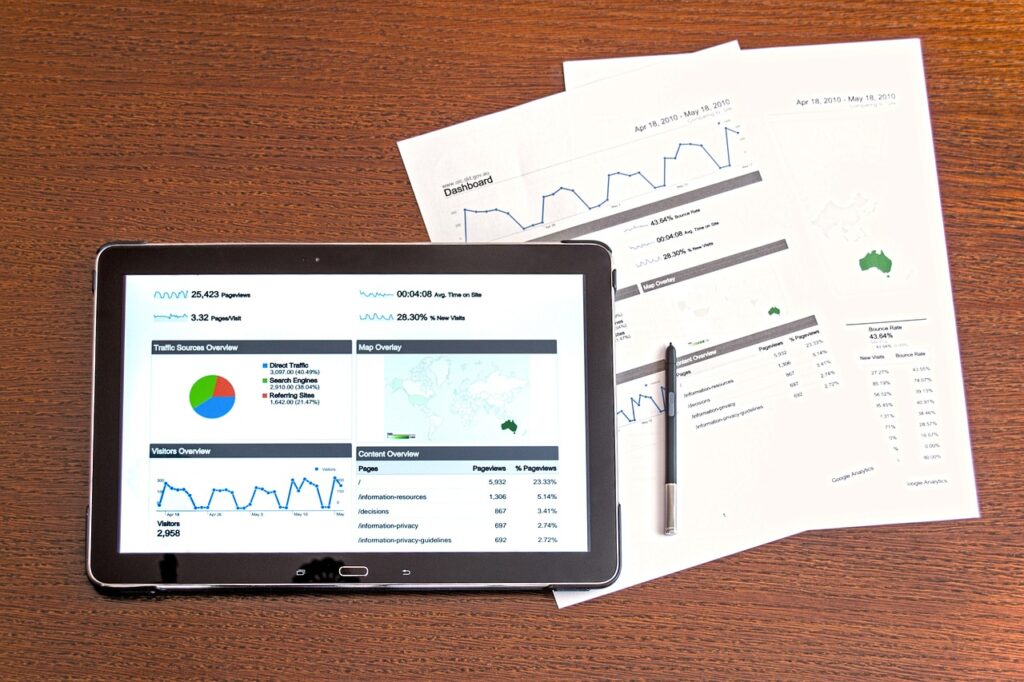Creating a patent landscape analysis involves analyzing ‘pre-patent’ works, identifying major players in the market, and searching non-patent literature databases. It’s also important to track and prevent any possible broad patent claim language.
Landscape analysis, also known as patent landscape analysis, is a research and analysis tool used in the field of intellectual property (IP) to understand the competitive and technological landscape of a particular area of technology. Landscape analysis is often used to inform business decisions and IP strategy, including the development of new products, the licensing of technology, and the enforcement of patents.
The process of landscape analysis typically involves the collection, analysis, and visualization of patent data, including patent families, citations, and ownership information. This information can be used to identify key players, understand the technological landscape, and identify trends in the development of new technology.
Landscape analysis can be performed for a specific technology area, such as a particular product or service, or for a broader field, such as biotechnology or electronics. It is often used by patent practitioners, technology companies, and investors to inform their IP strategy and make informed decisions about patent filing, licensing, and enforcement.

Searching non-patent literature databases
Performing a thorough search on non-patent literature databases is a crucial part of IP due diligence. This is especially important in R&D-intensive fields. These searches can help identify technology trends and potential opportunities. They can also be used to challenge patent validity.
Non-patent literature includes scientific journals, news reports, and conferences. It can also include websites and social sites. It is important to perform a search on all relevant literature from the public domain.
Non-patent literature is essential for a quality prior art search. The search can help to avoid costly litigation, as well as verify that an invention does not infringe on another’s patent.
The process of searching non-patent literature is time-consuming and arduous. The searcher has to manually sift through a huge database. Many studies can take months to complete.
The search is conducted on numerous free and paid databases. Some databases operate on artificial intelligence (AI) to enhance sorting and filtering of datasets. These databases also provide high-performance searches across several countries.
There are also tools that allow users to add custom metadata to patent information. These tools allow you to add comments that explain the information, or create new categories.
The results of these searches can be viewed through charts. These can be used for oral presentations, as well as accompanied written presentations. For maximum impact, it is recommended to use multi-factorial charts.
In addition, these tools also include features such as watermark-free patent images, alerts for specific technologies, and custom export with PowerPoint templates. Some of these premium services even include public sharing of reports.
These tools also provide a comprehensive guide for portfolio analysis. The results can be updated monthly or quarterly, depending on your needs.
Analyzing ‘pre-patent’ works
Performing a patent landscape analysis can answer questions about the patent landscape and help companies, investors and governments to assess risk. These landscapes can be built for emerging technologies and for established technologies.
The process involves a technical review of patents. It may also involve adding custom metadata to patent information. For example, a comment can be added to describe a specific technology. Then a new category can be created to represent a technology.
Performing a patent landscape analysis can be challenging. Some research fields have their own specific methods and protocols for conducting the exercise. However, the OECD Patent Statistics Manual suggests that some studies follow a common protocol. In addition, a study conducted by researchers from different intellectual fields indicates that there are some important limitations of certain methodologies.
Typical patent mapping studies can take months to complete. They may include thousands of patents. The process is time-consuming and costly. In some cases, patent data is limited and can be hard to obtain. It is therefore important to tailor the data to meet the specific research objectives.
A good seed set is the foundation of a successful patent landscape. A poor seed set will lead to incorrect correlations in a machine-learning model. Additionally, leaving out some sub-topics will result in under-represented sub-topics in the resulting landscape.
A good seed set can be sourced from pre-existing lists, or it can be created from scratch. The seed set should be representative of the topic of interest. For instance, a seed set of 10 to 30 patents relevant to a defined technology area should be considered a good starting point.
A seed set is also a good way to minimize the human effort involved in preparing the landscape. It is not uncommon for analysts to expand the initial list of cited patents.

Identifying major players in the market
Identifying major players in the patent landscape is a good first step to assessing your technology roadmap and business opportunities. A landscape study will also provide you with a birds eye view of the current state of the technology. It is a good way to see how your competitors are executing their strategies, as well as identify gaps in your own product and service portfolio.
The patent landscape is a trove of valuable information that helps you plan and execute your R&D strategy. It helps you identify gaps in your market, identify potential licensees, and discover new technology junctions for your R&D efforts. You can also use it to uncover uncharted technologies that your competitors might not have considered. It can also help you determine where to invest in your next big project.
A patent landscape report from Nerac gives you the best possible bird’s eye view of the technology industry. We have access to the world’s leading patent databases, and we can compile an exhaustive picture of the intellectual property players in your field. It’s not enough to know the names of your competition; you need to know how they stack up against one another.
The patent landscape can also help you identify the technology that will drive your future success. Using a patent data scout, you can identify the highest-return technology areas, as well as new business opportunities. The landscape can also show you which companies are investing in a particular technological area.
A patent landscape report will also tell you who is developing the most disruptive technology in the area. These companies may not be the only ones in the market, but they are the ones you want to look for.
- Assignee analysis: Analyze assignee data associated with patents from your dataset. Assignees refer to the companies or organizations that hold the patents. Search for assignees who appear often and hold a lot of patents in the same field. These organizations can include well-established companies, universities, research institutes, and government entities.
- Patent Portfolio Analysis: Analyse the size and quality the portfolios of different assignees. Take into account factors like the number of issued patents, geographic coverage, and diversity of technology covered. Patent portfolios are often indicative of a company’s strong market presence.
- Patent Citations: Analyze the network of citations in order to identify influential players. Patents which are often cited in other patents indicate their importance and influence. Consider assignees with patents that are cited a lot. This indicates their contribution to technological advances and their influence on future inventions.
- Market Intelligence Reports – Consult industry publications and databases to gain insight into the major players in specific industries or technologies. These reports usually highlight the key companies, including their market share, patent strategies, research activities and other information. These reports can validate your findings, and give you additional information about major players.
- Financial Reports and Data on Funding: Examine financial reports, investor presentation, and data on funding for companies that operate in the field. Information about research and development, partnerships and intellectual property strategy is often disclosed by publicly traded companies. Financial data analysis can give insight into the market position and strength of these companies.
- Join professional networks and attend conferences: You can join professional networks or engage with experts in the industry. These platforms provide opportunities to meet key people and gain insight into industry dynamics and major players. Experts can offer valuable insights on new players and disruptors.
- Patent Licensing & Litigation: Keep track of patent litigation and licensing cases. Organisations that are involved in patent litigation or licensing agreements often show their strength and strategies in intellectual property. These activities can be tracked to identify the major players in patent enforcement and their strategies.
Creating a patent landscape report

Creating a patent landscape report can be a complex process. It requires you to develop a proper understanding of the technology that you are looking at. This can be done by reading up on relevant news articles and research papers. You can also work with a technical team to develop a clear understanding of the technology.
Creating a patent landscape report may take a lot of time and money. However, it can be a very useful tool for businesses. It can help them identify white space opportunities and future technology trends. It can also help them develop an effective strategy.
A patent landscape report can provide key information about the inventors and licensees. It can identify the potential partners and customers that a business may want to target. It can also help an organization develop a new licensing strategy. This is especially important if the business is considering entering the patenting space.
A patent landscape report is a report that combines patent data and visualizations to create a broad view of the market. It can be used by a variety of organizations, including government agencies and private enterprises. Depending on the objectives of the organization, a particular approach will be chosen.
The main goal of a landscape analysis is to obtain an understanding of how the key players are performing in a specific technology area. It also provides a base for companies to determine what areas they should pursue research in.
A patent landscape report can be a helpful tool for businesses and product development teams. It can provide technical details about a specific patent and allow them to see how it fits into their existing products. It can also provide insights into specific domains and subcategories of a technology.
Overall, landscape analysis is a powerful tool for understanding the IP landscape and making informed decisions about IP strategy. It can help companies to identify potential competitors, evaluate own IP position, and make informed decisions about the development and commercialization of new technology.
Define Scope
Decide the specific technology or field that you wish to analyze. Define the scope and objectives clearly.
Search and collect patents
Use patent databases like the United States Patent and Trademark Office, the European Patent Office or any other relevant databases to search and collect patents in your field. Collect an extensive number of patents to be analyzed.
Refine and Categorize
Review and categorize the patents collected based on relevant criteria such as technology or industry, assignees, or patent classification code. The refinement and categorization of patents will allow you to identify trends and patterns.
Technology Classification
Assign the relevant technology classifications for each patent. Patent classification systems such as the International Patent Classification, or Cooperative Patent Classification provide a standard framework for categorizing and evaluating patents according to their technical subject matter. Analyzing patents in specific technology classes can help identify key areas for focus.
Analyze patent data
Perform a thorough review of all collected patents. Identify key technology areas, major patent holders, geographic distribution, trends in patent filing over time and emerging technologies.
Identify key players
Determine the major players in the field by looking at the assignees for the patents analyzed. Find out which companies, research institutes, or individuals hold large patent portfolios.
Assess Technology Trends.
Identify emerging technologies and trends in the patent landscape. Look for growth areas, disruptive technologies or potential white space that could offer innovation or research opportunities.
Assess Patent Quality.
Evaluate the significance and quality of the patents in the landscape. Search for patents that have a large number of citations or granted claims or patents which have been enforced.

